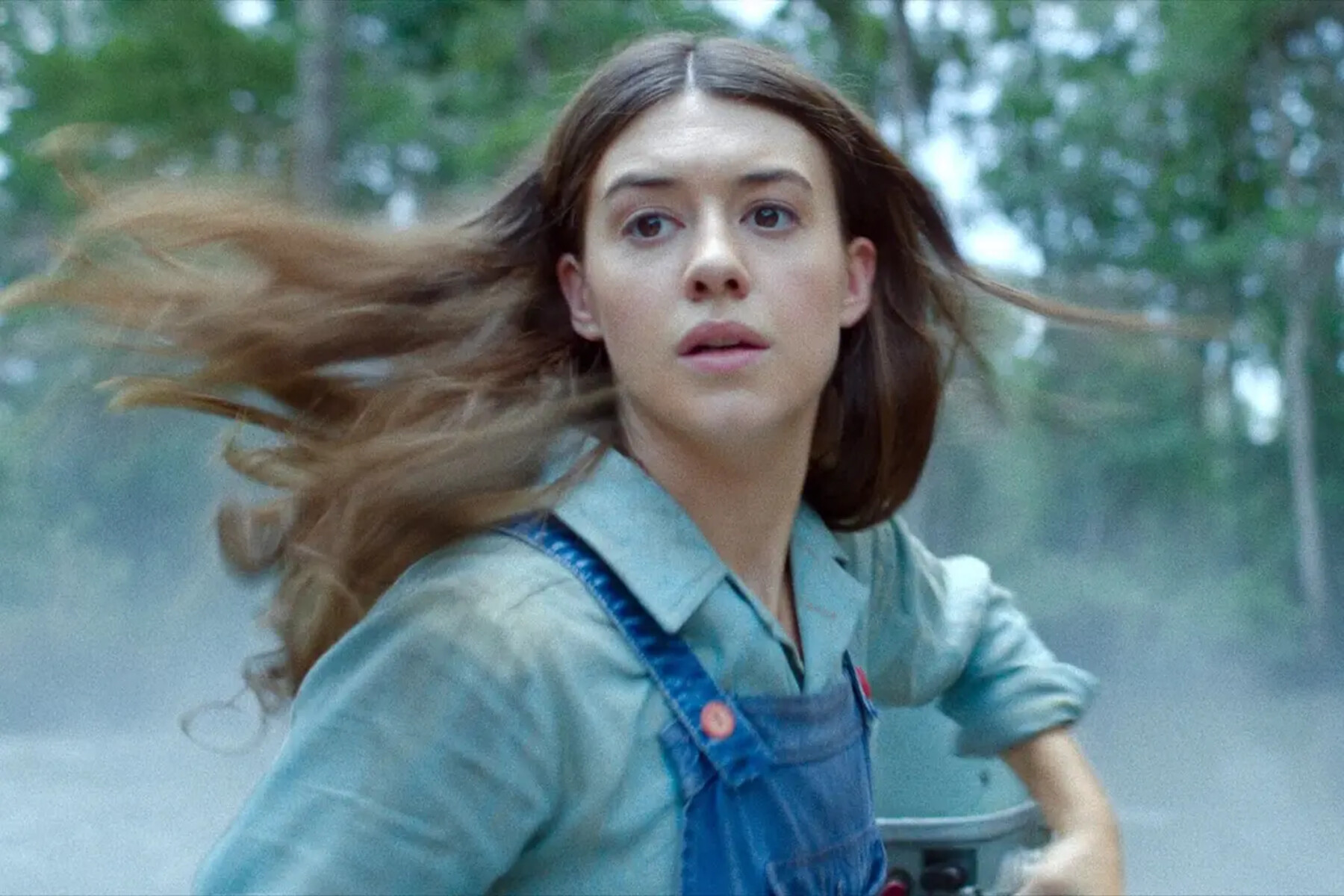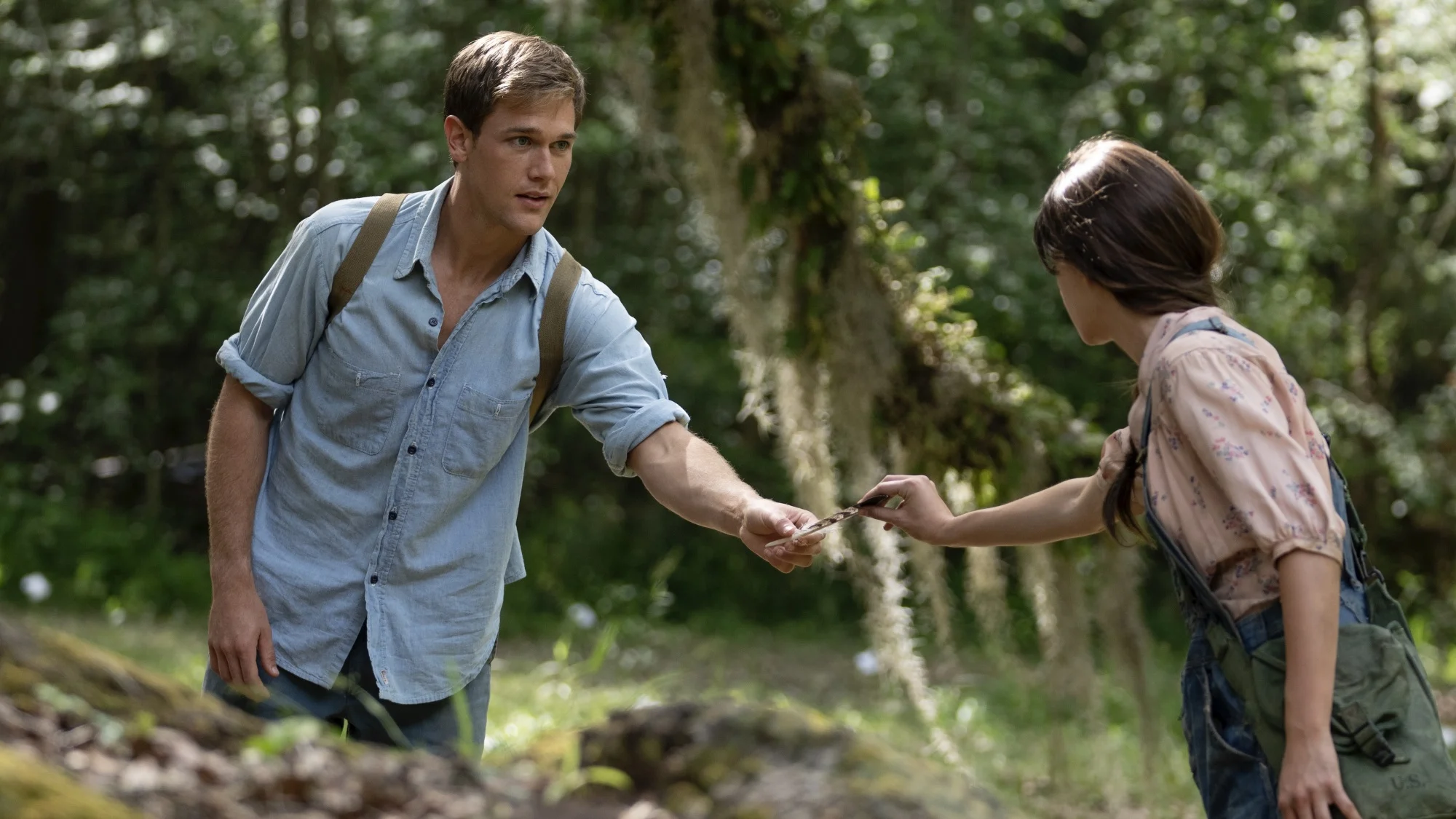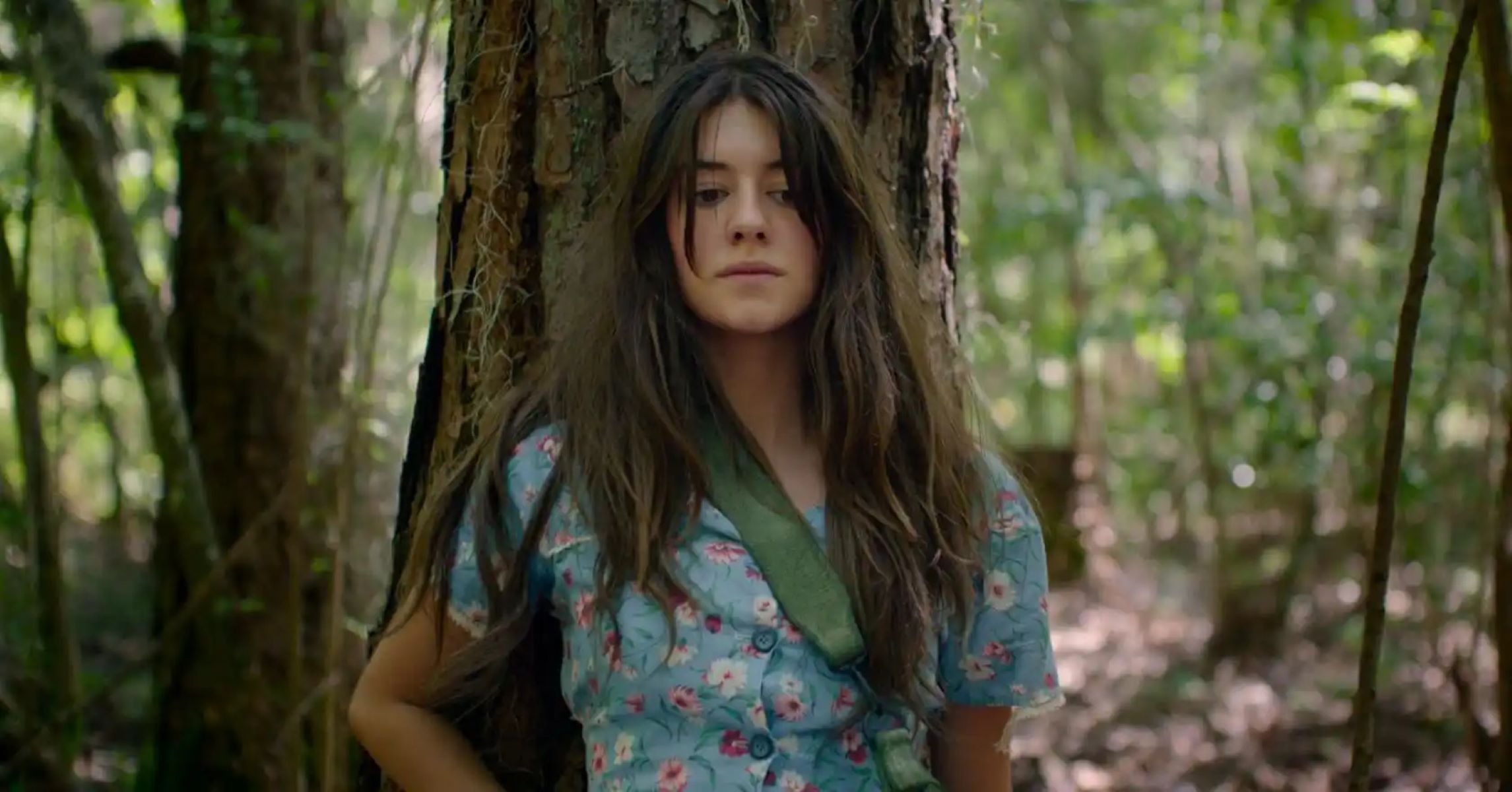Introduction
Welcome to the enchanting world of “Where The Crawdads Sing,” an extraordinary novel written by Delia Owens. This captivating story takes us on a journey into the life of Kya Clark, a young girl who grows up alone in the marshes of North Carolina.
Published in 2018, the book quickly gained widespread acclaim and became a New York Times bestselling novel. It seamlessly weaves together elements of mystery, romance, and coming-of-age, captivating readers with its vivid descriptions and poignant storytelling.
The novel opens with a mysterious death that grips the small coastal town of Barkley Cove. The locals suspect that Kya, known as the “Marsh Girl,” is responsible for the tragedy due to her isolated upbringing and unconventional lifestyle. As the story progresses, we delve deep into Kya’s past and present, exploring her resilience, love for the natural world, and the secrets that surround her existence.
Owens masterfully creates a richly atmospheric setting, painting a vivid picture of the marshes. The marsh becomes a character in itself, playing a crucial role in shaping the protagonist’s journey and providing a sense of solace and refuge. The author’s background as a wildlife scientist shines through her descriptive prose, lending an authentic and immersive experience to the story.
“Where The Crawdads Sing” delves into themes of survival, resilience, loneliness, and the profound connection between humans and their environment. It explores the complexities of human nature and the power of love and compassion, even in the face of adversity.
In this article, we will delve deeper into the storyline, analyze the intriguing characters that inhabit the book, explore the themes it explores, and examine the writing style and techniques employed by Delia Owens to bring this remarkable story to life. Let us embark on this literary adventure and immerse ourselves in the mesmerizing world of “Where The Crawdads Sing.”
Summary of the Storyline
“Where The Crawdads Sing” follows the tumultuous life of Kya Clark, a young girl abandoned by her family in the marshes of North Carolina during the 1950s. Left to fend for herself, Kya learns to navigate the harsh realities of survival, immerse herself in the natural world around her, and find solace in the untouched beauty of the marsh.
As Kya grows older, she becomes known as the “Marsh Girl” to the people of Barkley Cove, the nearby town. Her isolation and mysterious existence lead to wild rumors and misunderstandings among the locals. However, Kya’s world changes when she befriends Tate Walker, a local boy who shares her love for the marsh and helps her learn to read. Their friendship blossoms into a tender romance, providing Kya with a connection she has longed for.
But just as Kya begins to trust in the possibility of love and a life beyond the marsh, Tate leaves to pursue his education, leaving Kya heartbroken and alone once again. Over time, Kya catches the attention of Chase Andrews, a charismatic young man from Barkley Cove. The two form an unlikely bond, but their relationship is fraught with lies and secrets.
When Chase is found dead, the town immediately suspects Kya, fueling their long-held belief that the “Marsh Girl” is dangerous. Kya becomes the primary suspect, with the evidence stacked against her. As the trial unfolds, the community becomes divided, and Kya’s fate hangs in the balance.
Interwoven within the main narrative, the novel also explores Kya’s upbringing and the tumultuous relationships within her family. Through flashbacks, we witness the struggles her mother faces, her father’s abusive behavior, and Kya’s battle for survival in a world that has forsaken her.
As the story reaches its climax, it becomes clear that there is more to Kya’s life than meets the eye. The truth about Chase’s death is finally revealed, and the secrets of Kya’s past come to light, challenging the assumptions and prejudices of the townspeople. The novel ultimately culminates in a poignant and bittersweet resolution that celebrates the power of resilience and the enduring spirit of Kya Clark.
Character Analysis
“Where The Crawdads Sing” introduces readers to a compelling cast of characters, each with their own unique complexities and motivations. Delia Owens expertly brings these characters to life, ensuring they play integral roles in shaping the narrative and the growth of the protagonist, Kya Clark.
Kya Clark, also known as the “Marsh Girl,” is the heart and soul of the novel. Abandoned by her family at a young age, Kya is forced to adapt and survive on her own in the harsh marshland. Despite her isolation, Kya possesses a resilient spirit and an intimate connection to the natural world around her. Her character arc takes readers on a journey of self-discovery, as she navigates the complexities of trust, love, and the longing for human connection.
Tate Walker, Kya’s closest friend and confidante, is portrayed as an intelligent and compassionate young man. He becomes Kya’s anchor in a world full of uncertainty and misunderstanding. Tate’s unwavering support and belief in Kya’s intelligence contribute significantly to her personal growth and provide a glimpse of the genuine connection she yearns for.
Chase Andrews, the charismatic and enigmatic figure in Kya’s life, represents the duality of human nature. On one hand, he is charming and alluring, but beneath the surface, he carries his own secrets and conflicts. Chase’s presence in the story adds an element of mystery and danger, serving as a catalyst for both joy and heartbreak in Kya’s life.
The secondary characters in the novel, such as Jodie, Jumpin’, and Mabel, all contribute to the richness of the story. Jodie, Kya’s older brother, provides glimpses into Kya’s past and the challenges their family faced. Jumpin’ and Mabel, a couple who befriend Kya and offer her support and guidance, portray the importance of community and chosen family in times of isolation.
Owens excels in crafting realistic and layered characters who evoke a range of emotions from readers. She explores their flaws, vulnerabilities, and triumphs, making them relatable and multidimensional. Through each character’s unique journey, the novel delves into themes of forgiveness, resilience, and the impact of personal connections on one’s sense of self.
In summary, the multifaceted characters in “Where The Crawdads Sing” bring depth and authenticity to the narrative. From Kya’s transformational odyssey to the complex relationships she forges, Delia Owens showcases her storytelling prowess by creating characters that captivate and resonate with readers long after the final page.
Themes Explored in the Book
“Where The Crawdads Sing” delves into various profound themes, adding depth and complexity to the narrative. Delia Owens skillfully weaves these themes into the story, inviting readers to contemplate topics that resonate on a universal level.
One of the central themes explored is the power of nature and its transformative effect on the human spirit. Throughout the book, the marsh serves as a symbol of both beauty and danger. Kya’s deep connection to the natural world becomes a source of solace and healing, illustrating the restorative power of nature in the face of isolation and adversity.
Loneliness and isolation are also prominent themes in the novel. Kya’s abandonment and subsequent solitude highlight the profound impact of loneliness on one’s emotional well-being. Owens explores the effects of social isolation, the longing for human connection, and the resilience it takes to forge meaningful relationships.
The theme of prejudice and judgment is another key element in the story. Kya, as the “Marsh Girl,” is shunned and misunderstood by the townspeople. The novel explores the damaging effects of stereotypes, the cruelty of discrimination, and how assumptions can lead to grave injustices.
Love and forgiveness are prominent themes that run throughout the book. The elusive nature of love and the transformative power it possesses are explored through Kya’s relationships with Tate and Chase. The novel delves deep into the complexities of forgiveness, demonstrating the healing potential it holds for both the forgiver and the forgiven.
Additionally, “Where The Crawdads Sing” examines the dichotomy between the beauty and brutality of human nature. The characters in the story showcase the capacity for both kindness and cruelty, reminding readers of the inherent contradictions within all individuals.
The importance of education and knowledge is also a recurring theme. Kya’s hunger for learning and her journey to educate herself against all odds underscore the power of knowledge in empowering individuals and challenging societal expectations.
Furthermore, the loss of innocence, resilience, and the search for identity are themes explored in the book. The growth and development of Kya’s character highlight the resilience of the human spirit and the ways in which individuals can find strength in the face of adversity.
Ultimately, “Where The Crawdads Sing” offers a rich tapestry of themes that resonate with readers on an emotional and intellectual level. Delia Owens skillfully invites readers to reflect on the complex nuances of human nature, the importance of connection, and the powerful impact of our choices and actions.
Style and Writing Techniques
Delia Owens masterfully employs a distinct writing style and a variety of techniques in “Where The Crawdads Sing,” enhancing the overall reading experience and immersing readers in the vivid world she creates.
Owens’ prose is poetic and evocative, painting detailed and sensory-rich descriptions of the marshland and its inhabitants. Her vivid imagery not only transports readers to the atmospheric setting but also allows them to experience the sights, sounds, and smells of the marsh in a remarkably immersive way. This lyrical style contributes to the overall enchanting and ethereal tone of the novel.
The author seamlessly blends multiple narrative timelines, alternating between the past and present, as well as incorporating courtroom testimonies. These shifts in time provide readers with a deeper understanding of the characters and their motivations, allowing for a richer exploration of the story’s central mystery.
Symbolism is another notable aspect of Owens’ writing. The marsh itself becomes a powerful symbol throughout the book, representing both the beauty and brutality of nature, as well as Kya’s isolation and resilience. The recurring presence of feathers, shells, and other natural artifacts further adds layers of symbolism, inviting readers to interpret their significance in relation to the story’s themes and characters.
The author’s attention to detail and meticulous research is evident in the scientific accuracy of the natural world she portrays. Owens, a former wildlife scientist, infuses her writing with scientific facts and observations, infusing credibility and authenticity into the narrative. This incorporation of scientific knowledge seamlessly blends with the storytelling, reinforcing the connection between humans and the environment.
Dialogue plays a crucial role in the novel, providing insights into the characters’ personalities and relationships. Owens skillfully renders the distinct Southern dialect of the characters, capturing the essence of their individual voices. This authenticity brings a sense of regional flavor to the story, enhancing the overall immersion in the setting and cultural context.
Furthermore, Owens’ use of foreshadowing and suspense heightens the intrigue and tension throughout the narrative. The gradual reveals and carefully planted hints keep readers engaged, eagerly forging ahead to uncover the secrets of the marsh and the characters’ lives.
Lastly, the book’s pacing, as well as the delicate balance between introspection and action, contributes to its compelling nature. The blend of emotional introspection and suspense-filled plot developments creates a captivating rhythm that keeps readers invested in the story from start to finish.
In summary, Delia Owens showcases her prowess as a writer through her poetic prose, meticulous research, symbolic imagery, authentic dialogue, and skillful narrative techniques. These elements make “Where The Crawdads Sing” a beautifully crafted and immersive reading experience that lingers in the minds and hearts of readers long after they turn the final page.
Importance of the Marsh Setting
The marsh setting in “Where The Crawdads Sing” is more than just a backdrop; it plays a vital role in shaping the story and the characters’ lives. Delia Owens masterfully captures the significance of the marsh, making it a character in its own right and exploring its profound impact on the narrative.
First and foremost, the marsh serves as a haven for the protagonist, Kya Clark. Abandoned as a child, Kya finds solace and refuge within the ethereal beauty of the marsh. Its vast expanse becomes her sanctuary, shielding her from the harsh realities of the outside world. The untouched natural surroundings nurture her spirit and provide her with a sense of belonging.
Moreover, the marsh symbolizes both resilience and vulnerability. Just as Kya adapts and thrives in the ever-changing environment of the marsh, the ecosystem itself perseveres against the tides and external forces. The fragile yet tenacious nature of the marsh mirrors the characters’ journeys, emphasizing the resilience required to navigate life’s challenges.
The marsh is also intricately linked to the themes of isolation and connection. While the marsh isolates Kya from society, it also connects her to something greater than herself – the natural world. Her profound understanding and reliance on the marsh foster a deep connection to the environment and its creatures. This connection becomes a source of strength and identity for Kya, who feels more at home within the marsh’s embrace than in the judgmental human world.
Owens’ vivid descriptions of the marsh and its inhabitants not only create an enchanting atmosphere but also highlight the delicate balance between harmony and destruction. Through detailed observations of the flora and fauna, readers are made aware of the interconnectedness of all living beings. This fosters a sense of stewardship for the environment and prompts reflection on humanity’s impact on the delicate ecosystems that surround us.
Furthermore, the marsh setting acts as a metaphor for the dichotomies explored in the novel. It represents both the duality of the natural world itself, with its beauty and brutality, as well as the dual nature of human beings, capable of kindness and cruelty. The contrast between the idyllic scenery and the harsh realities of survival serves as a backdrop against which the characters’ strengths and flaws are amplified.
Ultimately, the marsh setting in “Where The Crawdads Sing” is not merely a geographical location, but a profound and essential element of the narrative. It influences the characters’ development, symbolizes key themes, and serves as a reminder of the power and fragility of the natural world. Owens’ masterful depiction of the marsh elevates the story, infusing it with a sense of wonder, connection, and reflection on our place within the larger tapestry of life.
Review of the Book’s Reception
“Where The Crawdads Sing” has garnered significant attention since its publication, captivating readers and critics alike. Delia Owens’ remarkable storytelling and immersive prose have propelled the novel to immense popularity, making it a New York Times bestselling book and receiving widespread acclaim.
Reviewers have praised the book’s lyrical writing style and the author’s ability to vividly transport readers to the atmospheric world of the marsh. Many have commended Owens’ attention to detail and her skill in crafting evocative descriptions of nature, ensuring that the setting becomes a compelling character in its own right.
Moreover, the characters in “Where The Crawdads Sing” have resonated deeply with readers. Kya Clark, in particular, has been celebrated for her emotional depth and resilience. Reviewers have praised the way Owens brings Kya to life, capturing her vulnerability, strength, and longing for human connection with authenticity and compassion.
The novel’s exploration of universal themes has also been widely lauded. Critics have praised Owens’ ability to seamlessly weave together themes of love, loneliness, forgiveness, and the power of nature. The book’s thought-provoking exploration of these themes has resonated with readers, eliciting strong emotional responses and prompting introspection.
In addition to its literary merits, “Where The Crawdads Sing” has been applauded for its engrossing and layered plot. The mystery surrounding a death in the marsh and the gradual revelations throughout the story have kept readers captivated, leading to a page-turning reading experience.
The book’s reception has also been reflected in its commercial success. “Where The Crawdads Sing” has spent countless weeks on bestseller lists, capturing the attention and enthusiasm of readers around the world. Its popularity has been further enhanced by word-of-mouth recommendations and its inclusion in book clubs and reading groups.
While the overwhelming majority of reviews have been positive, some critics have pointed out occasional pacing issues and a reliance on familiar tropes. However, these critiques have been overshadowed by the widespread acclaim for the book’s overall narrative and emotional impact.
In summary, “Where The Crawdads Sing” has garnered widespread recognition and praise from both readers and critics. Delia Owens’ captivating storytelling, lyrical prose, and unforgettable characters have propelled the novel’s success. The book’s exploration of universal themes and its engrossing plot have firmly entrenched it as a beloved and highly recommended literary work.
Comparison to Other Popular Novels
“Where The Crawdads Sing” stands out as a unique and compelling novel, but it can be interesting to compare it to other popular works in the literary landscape. While each book has its distinct qualities, there are some notable similarities and differences worth exploring.
One novel that shares similarities with “Where The Crawdads Sing” is “To Kill a Mockingbird” by Harper Lee. Both books delve into themes of prejudice, injustice, and the resilience of the human spirit. They also feature strong and memorable female protagonists who navigate complex social environments. While “To Kill a Mockingbird” is set in the racially charged atmosphere of 1930s Alabama, “Where The Crawdads Sing” explores the isolated marshes of North Carolina during the 1950s and ’60s.
Another novel that may be compared to “Where The Crawdads Sing” is “The Secret Life of Bees” by Sue Monk Kidd. Both books feature young female protagonists on journeys of self-discovery and explore themes of personal resilience, loss, and the power of female relationships. Additionally, they both have Southern settings and touch on racial dynamics in their respective narratives.
If considering works that focus on the beauty and power of nature, “The Overstory” by Richard Powers comes to mind. While “The Overstory” is a more intricate and expansive exploration of humanity’s relationship with trees and the natural world, it shares common ground with “Where The Crawdads Sing” in its profound depiction of the natural environment and its impact on the characters’ lives.
Regarding the coming-of-age aspect of “Where The Crawdads Sing,” “The Catcher in the Rye” by J.D. Salinger may be brought into the comparison. Both novels explore the challenges and complexities of adolescence, with central characters navigating feelings of isolation and grappling with issues of identity and belonging.
However, it is important to note that while these comparisons can provide a frame of reference, “Where The Crawdads Sing” is a distinct and individual work that stands on its own merits. Delia Owens’ immersive writing style, unique setting, and complex characters contribute to a narrative that is all its own.
In summary, while “Where The Crawdads Sing” shares certain thematic and stylistic similarities with other popular novels, it is ultimately a singular work that showcases Delia Owens’ remarkable storytelling abilities. Its evocative portrayal of nature, exploration of personal resilience, and rich character development make it a standout work in contemporary literature.
Impactful Quotes from the Book
“Where The Crawdads Sing” is filled with powerful and thought-provoking passages that resonate with readers long after the book is finished. These quotes encapsulate the depth, emotion, and universal themes explored throughout the story.
-
“She wasn’t aware that words could hold so much. She didn’t know a sentence could be so full.” – Delia Owens
This quote highlights the transformative power of language and the profound impact that words can have on a person. It emphasizes the importance of communication and the ability of words to convey complex emotions and experiences.
-
“Autumn leaves don’t fall, they fly. They take their time and wander on this their only chance to soar.” – Delia Owens
This quote beautifully captures the fleeting nature of life and the transient beauty of the natural world. It reminds us to embrace the present moment and appreciate the delicate balance of life’s experiences.
-
“There are some who can live without wild things, and some who cannot.” – Delia Owens
This poignant quote speaks to the intrinsic connection between human beings and the natural world. It emphasizes the deep-rooted desire to connect with the wild and the profound impact it has on one’s sense of being.
-
“The more she knew, the more she carried within her that she did not know.” – Delia Owens
Reflecting the novel’s exploration of knowledge and self-discovery, this quote highlights the infinite possibilities of learning and the humbling realization that there is always more to discover. It speaks to the vastness of the human experience.
-
“It’s amazing how a person can cling to a glimmer of hope, however small, when they are drowning in darkness.” – Delia Owens
This quote encapsulates the resilience and strength of the human spirit in the face of adversity. It speaks to the power of hope and its ability to provide light in even the darkest of times.
These impactful quotes from “Where The Crawdads Sing” exemplify Delia Owens’ ability to distill complex emotions, philosophical musings, and elemental truths into lyrical and evocative prose. They encapsulate the universal themes explored in the book and serve as reminders of the enduring power of resilience, nature, language, and the human spirit.
Author’s Background and Influences
Delia Owens, the author of “Where The Crawdads Sing,” brings a unique perspective to her writing, drawing from her extensive background in wildlife science and her experiences living in remote areas. These influences have shaped her storytelling style and the themes she explores in her novel.
Owens’ passion for wildlife and the natural world stems from her upbringing in rural Georgia. Growing up in an outdoors-oriented family, she developed a deep appreciation for the beauty and complexities of nature. This love for the environment led her to pursue a career in wildlife biology, studying various species in different parts of the world.
The author’s scientific background is evident in her meticulous attention to detail and her ability to authentically depict the natural world in her writing. Her descriptions of the marsh and its ecosystem showcase her deep understanding and respect for the environment, enhancing the immersive experience for readers.
Owens’ experiences of living in remote areas, including Africa and the wilderness of Idaho, have also influenced her writing. Being immersed in nature and disconnected from modern comforts has provided her with a unique perspective on solitude, resilience, and the human connection to the natural world. These themes are prominent in “Where The Crawdads Sing,” as she explores the protagonist’s isolated existence and her innate bond with the marshland.
Additionally, Owens draws inspiration from works of literature and storytelling traditions. She cites classics such as “To Kill a Mockingbird” by Harper Lee and “Jane Eyre” by Charlotte Brontë as influences on her writing style and character development. Owens’ ability to create vivid settings, evoke powerful emotions, and craft memorable characters reflects the impact of these literary influences.
Moreover, Owens has mentioned that her experiences working with indigenous communities in Africa have informed her understanding of cultural sensitivity and the importance of respectful representation in her storytelling. This is reflected in her nuanced portrayal of the characters’ backgrounds and the way she navigates themes of prejudice and judgment in the novel.
In summary, Delia Owens’ background in wildlife science, her experiences living in remote areas, and her engagement with literature and storytelling traditions have all shaped her writing style and the themes she explores in “Where The Crawdads Sing.” Her deep connection to the natural world and her understanding of cultural sensitivity infuse her storytelling with authenticity and richness, creating a memorable reading experience.
The Film Adaptation
The extraordinary journey of “Where The Crawdads Sing” continues with the highly anticipated film adaptation of the novel. The book’s immense popularity and captivating storyline have garnered the attention of filmmakers and fans alike, leading to excitement and speculation surrounding the upcoming movie.
The film rights to “Where The Crawdads Sing” were acquired by Reese Witherspoon’s production company, Hello Sunshine, shortly after the book’s release. Witherspoon, known for her eye for compelling stories and strong female protagonists, has shown a commitment to bringing empowering and thought-provoking narratives to the screen.
While specific details about the film adaptation are still being kept under wraps, fans eagerly anticipate seeing the evocative marsh setting come to life on the big screen. The captivating visual imagery that Delia Owens crafted in her novel presents a mesmerizing opportunity for cinematography and visual storytelling.
One question that arises with any film adaptation is the casting of the beloved characters. Fans are curious to see who will bring characters like Kya Clark, Tate Walker, and Chase Andrews to life on the screen. The casting choices will play a pivotal role in staying true to the essence of the characters and driving emotional connections with the audience.
The success of the film adaptation will likely hinge on capturing the atmospheric beauty of the marsh, the emotional depth of the characters, and the intricacies of the novel’s layered plot. Ensuring a faithful adaptation that maintains the book’s powerful themes and its delicate balance between mystery, romance, and coming-of-age will be crucial.
Furthermore, the film adaptation provides an opportunity to delve even deeper into the narrative, potentially expanding on certain aspects or exploring elements that may not have been as prominent in the book. The visual medium of film allows for the exploration of nuanced details, creating a dynamic storytelling experience for both fans of the book and new audiences.
As with any film adaptation, there will always be discussions and variations between the book and the film interpretation. However, the film version of “Where The Crawdads Sing” presents an exciting opportunity to bring Delia Owens’ compelling story to an even wider audience and enrich the immersive experience of this mesmerizing tale.
In summary, the film adaptation of “Where The Crawdads Sing” has generated much anticipation as fans eagerly await the opportunity to see the vivid marsh setting and compelling characters come to life on the big screen. With the right casting choices and a faithful interpretation of the novel’s themes and storytelling elements, the film has the potential to further captivate audiences and celebrate the enduring power of Delia Owens’ remarkable work.
Conclusion
“Where The Crawdads Sing” is a remarkable novel that has captivated readers around the world with its vivid storytelling, evocative descriptions, and compelling characters. Delia Owens’ masterful craftsmanship and unique perspective as a wildlife scientist have created a truly immersive and unforgettable reading experience.
The book’s atmospheric marsh setting serves as a powerful backdrop, symbolizing both beauty and danger while providing solace and connection for the protagonist, Kya Clark. The themes explored in the novel – from resilience and loneliness to the power of nature and the impact of prejudice – resonate deeply with readers, prompting introspection and emotional engagement.
Owens’ writing style, characterized by poetic prose and meticulous attention to detail, evokes the sights, sounds, and sensations of the marsh and its inhabitants. Her use of symbolism, multi-layered characters, and narrative techniques contribute to the novel’s depth and impact.
“Where The Crawdads Sing” has received widespread acclaim and commercial success, with its compelling storyline, relatable characters, and universal themes attracting a broad audience. The book’s positive reception has paved the way for a film adaptation, heightening excitement and anticipation among fans eager to see the story brought to life on the big screen.
In bringing this article to a close, we can reflect on the lasting impact of “Where The Crawdads Sing.” Delia Owens has created a literary masterpiece that resonates with readers, inviting us to contemplate the power of resilience, the importance of human connection, and the profound bond between individuals and the natural world.
As we turn the final page of “Where The Crawdads Sing,” we are left with a sense of wonder, a heightened appreciation for the beauty of nature, and a renewed belief in the strength of the human spirit. Delia Owens’ storytelling prowess ensures that this extraordinary novel will continue to captivate and inspire readers for years to come.

























